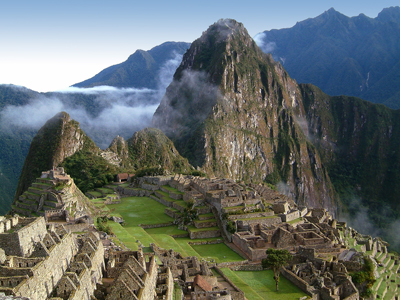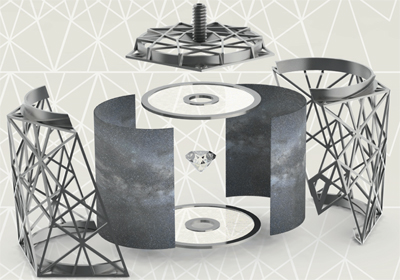Sending a Message to the Future
Carnegie Mellon’s William Alba Leads Project To Gather Votes On Earth’s Most Important Locations for Lunar Time-Capsule Message
By Jocelyn Duffy / 412-268-9982 / jhduffy@andrew.cmu.edu
 If you were to leave a message for someone in the far distant future about what you think is important about Earth, what would your message say? How would you communicate a story about our world to future Earthlings, or even to extraterrestrial intelligences?
If you were to leave a message for someone in the far distant future about what you think is important about Earth, what would your message say? How would you communicate a story about our world to future Earthlings, or even to extraterrestrial intelligences?
William Alba has been pondering these questions for years, and he’s devised a practical plan to create such a message and put it on the moon.
Called Earth Tapestry, the project invites people across the globe to vote on our planet’s most important locations, both natural and manmade. Information about the top-ranked locations will be laser-engraved onto a sapphire disk and delivered to the moon on a CMU-Astrobotic robotic lunar mission.
“I wanted as many people as possible to have the option to decide what we want to say about ourselves to the future and to other intelligences,” said Alba, the director of Carnegie Mellon’s Science and Humanities Scholars Program.
Alba points to the Golden Record, which was launched aboard the Voyager spacecraft in 1977, as inspiration. The 12-inch gold-plated copper disk contains sounds and images about life and culture on Earth. A committee chaired by Carl Sagan chose what to put on the record.
 “Now, using modern technology and a contemporary voting algorithm, we can get a whole bunch of people to think about what we ought to preserve, what we ought to curate,” Alba said.
“Now, using modern technology and a contemporary voting algorithm, we can get a whole bunch of people to think about what we ought to preserve, what we ought to curate,” Alba said.
The Earth Tapestry website presents to voters two images of landmarks — Hagia Sophia and Machu Picchu, for example — and asks them to choose which one is more awe-inspiring, or durable, or ingenious. There are eight criteria, and currently 200 locations, including spots such as Mount Everest, the Great Wall of China and the Large Hadron Collider. Alba created the Earth Tapestry website with undergraduate students at CMU and with researchers at the MIT Media Lab.
Votes have been coming in from around the world, and Alba is delighted. “When I see the vote count go up, it’s so exciting because I know that somewhere in the world people are thinking about this and they are voting.”
Alba would like to collect as many votes as possible before May 1, 2015. On that day he will take a snapshot of the results to give to other members of CMU’s Moon Arts Group, who will include Earth Tapestry’s message into their “Moon Arts Ark” that will head to the moon.
The Earth Tapestry website will still be collecting votes after May 1, says Alba. In addition to being on the moon, images of the most important landmarks chosen by voters will be part of an art installation during the College of Fine Arts centennial celebration in 2016. The data also will be preserved in deep digital archives in conjunction with CMU’s University Libraries.
But if you want to be a part of the message that’s sent to the moon, don’t wait. Cast your vote at earthtapestry.org before May 1.
Machu Picchu in Peru (pictured at the top) is on the Earth Tapestry ballot.
Pictured above is the lunar lander's Moon Art Chamber that will include Earth Tapestry’s message when it heads to the moon.